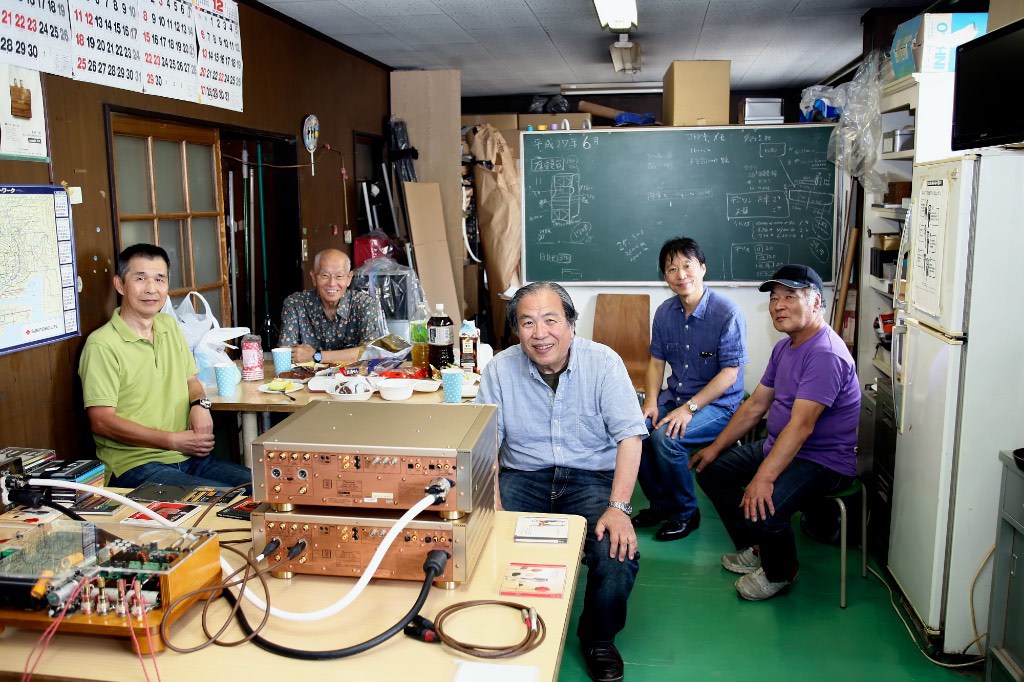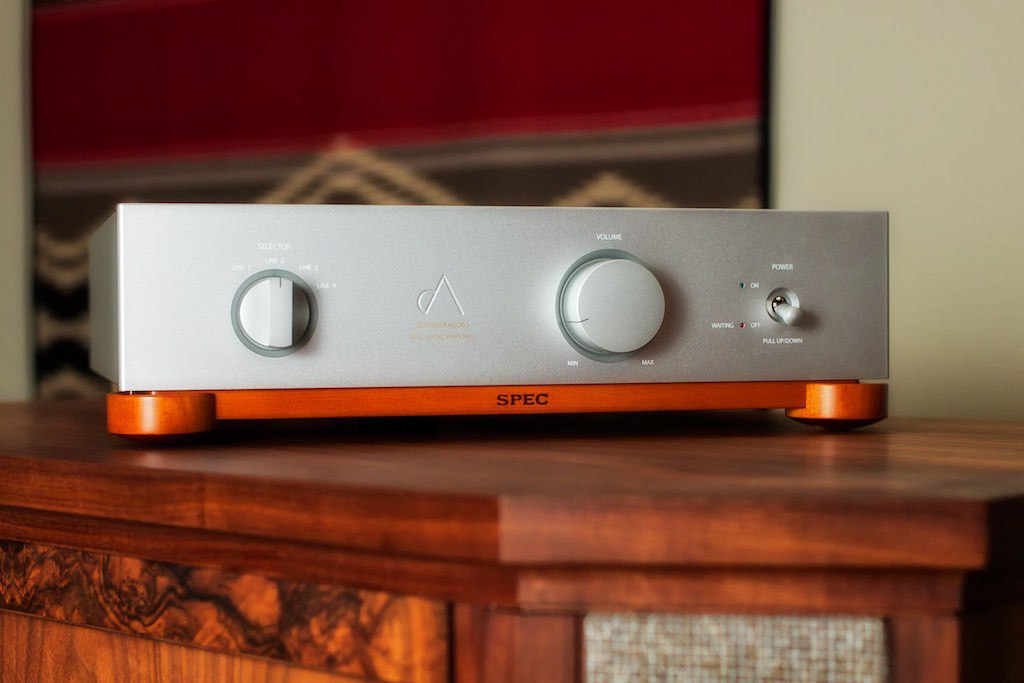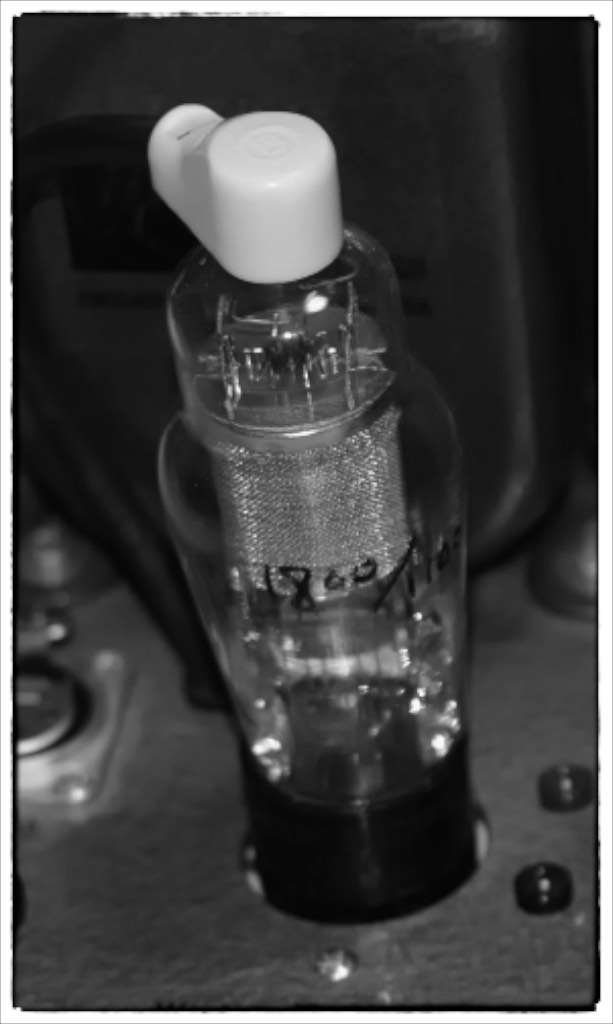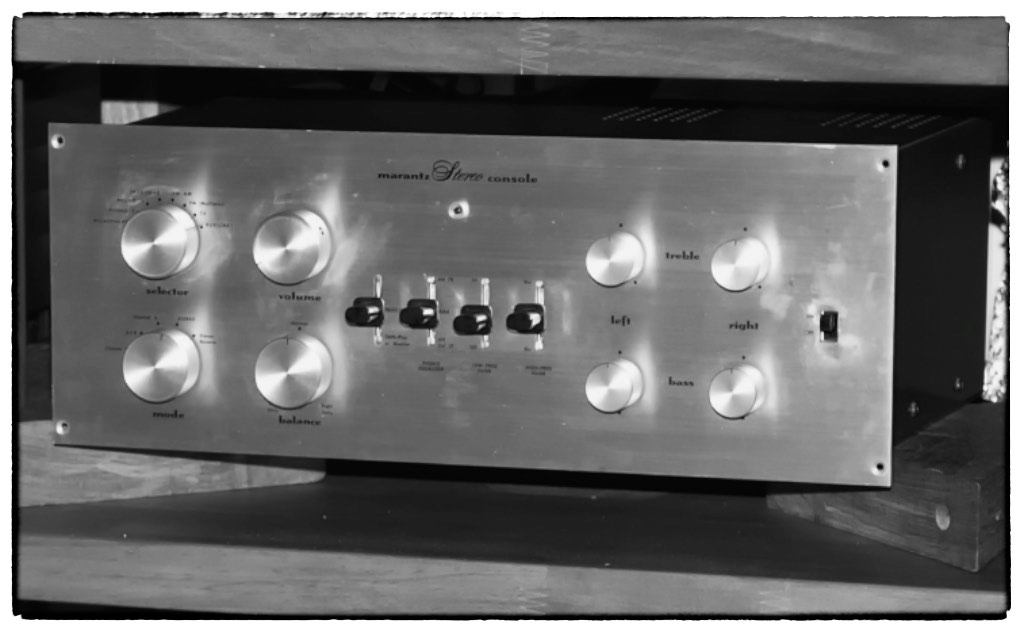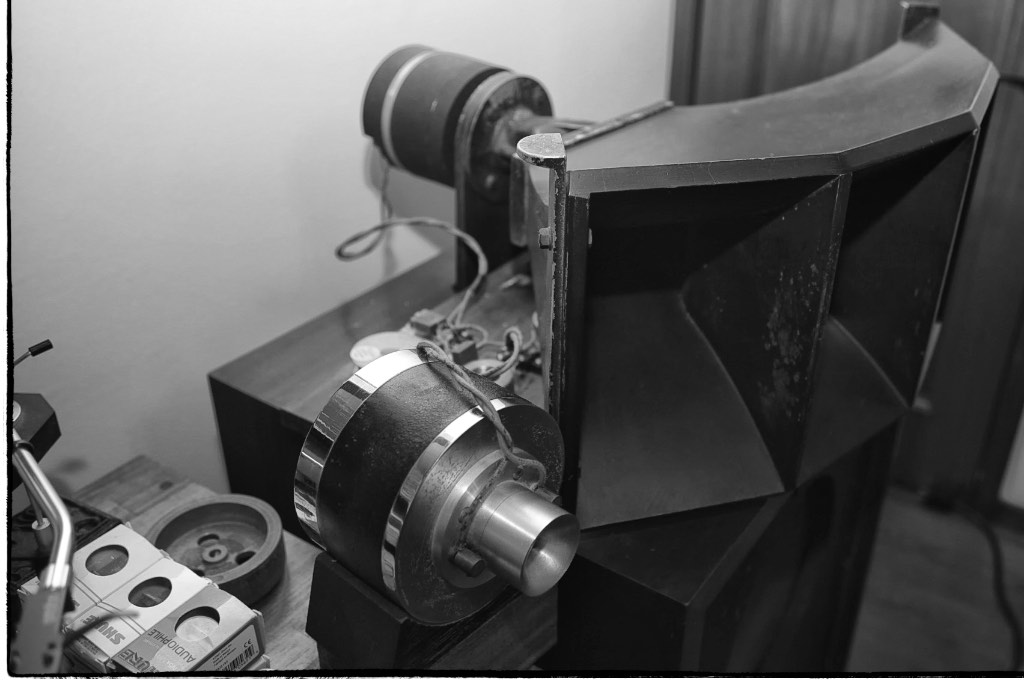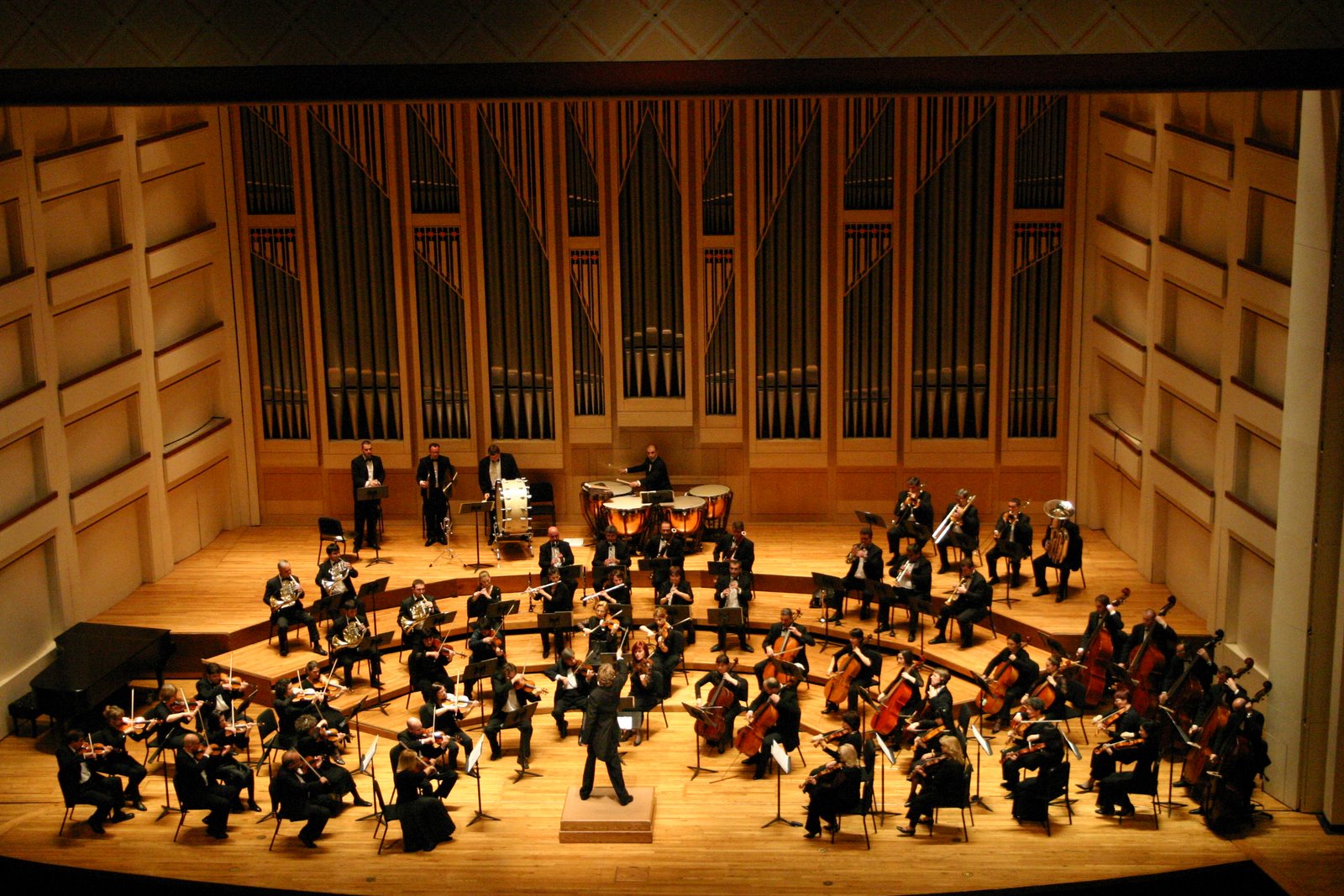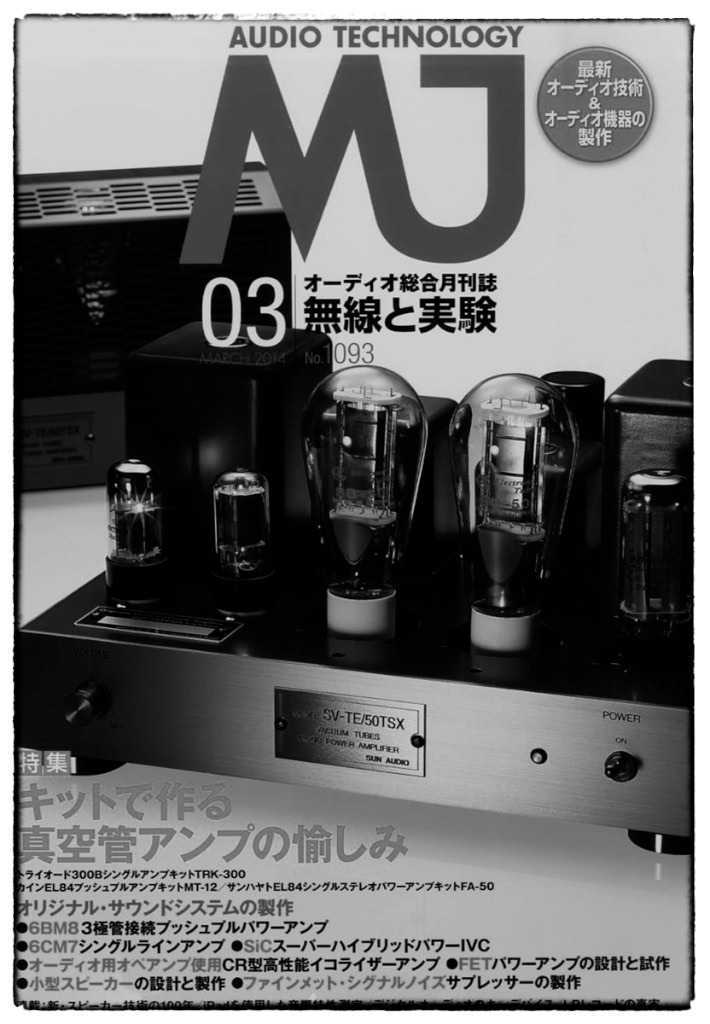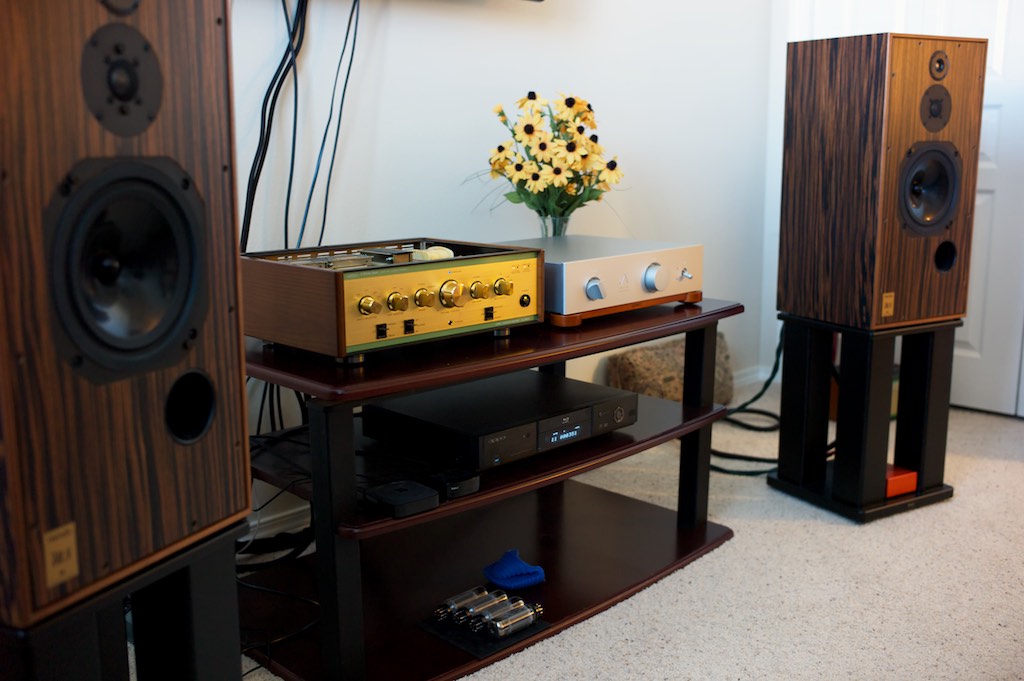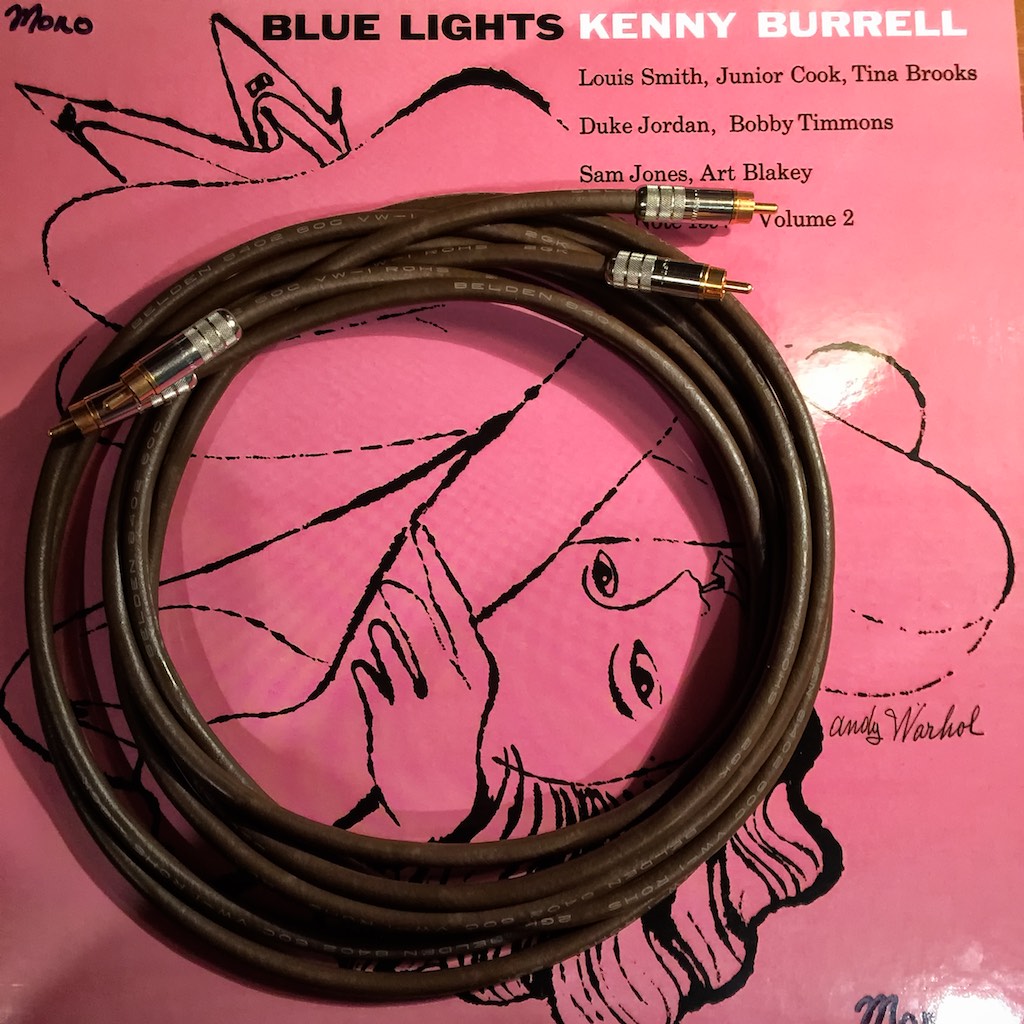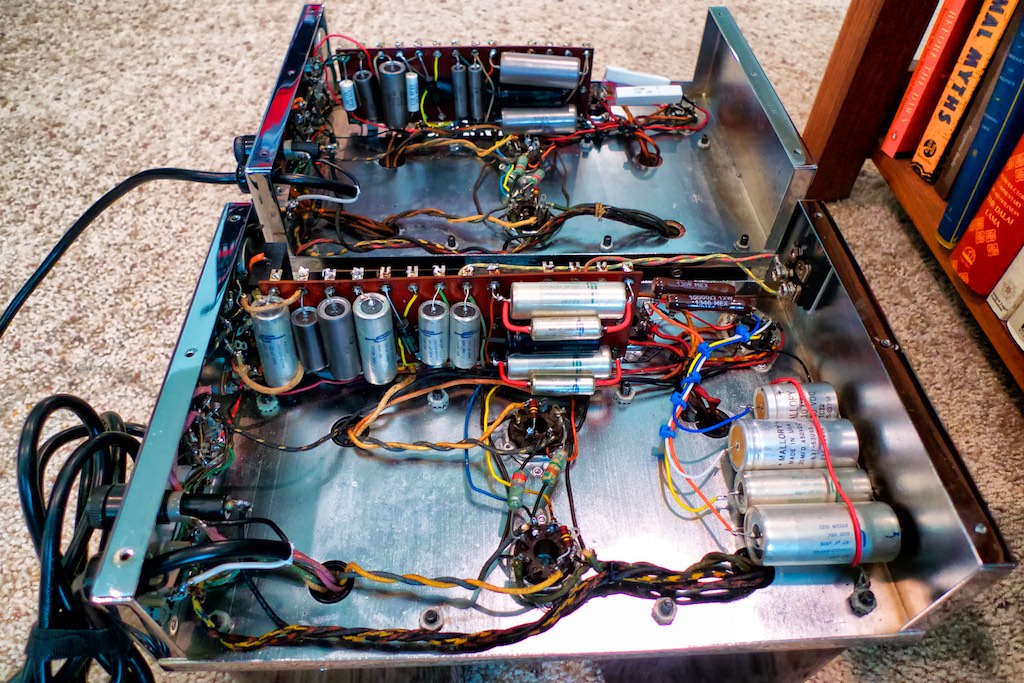I am hard at work on my article for Positive Feedback, Adventures in Real Sound with Mr. Shirokazu Yazaki, and thought I'd share a snippet of it with you. I'll add more as time goes on.
Adventures in Real Sound with Mr. Shirokazu Yazaki
By Jeff Day
In Issue 78 I introduced you to the remarkable Mr. Shirokazu Yazaki of Tokyo, Japan (above, center, with friends), in my article about the SPEC RSA-M3 Real Sound Amplifier.
Mr. Shirokazu Yazaki has been a successful professional audio designer in Japan for over 40 years, and has been involved in the design of many fine audio components from some of the foremost Japanese electronics companies during that time, as well as being in charge of the Pioneer research & development center, and more recently, as a founder of the SPEC Corporation.
At the same time that Yazaki-san has been pursuing his professional audio career, he has also been a life-long music & audio enthusiast with interests in the direct-heated single-ended triode amplifier (DH-SET) and horn loudspeaker constructeur movement in Japan.
As a young university student, Yazaki-san was present at the beginning of DH-SET movement in Japan, which influenced his audio perceptions, and started him off on a life-long journey of assembling & refining his personal high-fidelity music system.
The young Yazaki-san started his personal audio journey by constructing his own DH-SET amplifier, then by building and customizing the classic Marantz 7 kit preamplifier, and over time he assembled and refined an Altec & Onken-based horn loudspeaker system, all of which he enjoys listening to music with to this very day.
In the midst of that life-long immersion of combined professional & personal interests in high-fidelity audio, a new way of hearing, feeling, and experiencing high-fidelity music reproduction emerged for Yazaki-san that he refers to as ‘Real Sound’, and he has incorporated those aspects of performance that create the ‘Real Sound’ experience into his home system of DH-SET vacuum tube amplifiers & Onken horn loudspeaker system, as well as into his cutting edge designs for the SPEC Corporation.
I was so impressed after discussing Yazaki-san’s ‘Real Sound’ audio interests, and listening to his SPEC RSA-M3 Real Sound Amplifier, I said, “I think we may very well be living in another 'big' aha moment in audio history comparable to the one that happened with the DH-SET movement in Japan, now over 40 years ago …”
It can sometimes be difficult to recognize how significant an audio event truly is as it is occurring, until the passage of time allows one to frame it against other similar events in the context of history, like with the DH-SET constructeur movement in Japan.
Now a mere 6 months after my article in Issue 78, I am convinced that what I told you about Yazaki-san, and what he is doing with his adventures in ‘Real Sound’, is an even more significant audio event than I first suspected.
I want to share with you some of my adventures in exploring ‘Real Sound’ with Yazaki-san’s mentoring, and with my good friend Ron Barbee’s generous volunteering of technical expertise, as well as try to articulate for you, with several examples, what I am hearing, feeling, and experiencing when listening to music within Yazaki-san’s ‘Real Sound’ context.
Adventures in Real Sound with Mr. Shirokazu Yazaki
These adventures in ‘Real Sound’ with Yazaki-san have become the title for this article, and I hope I can give you a sense of the significance of what these ‘adventures in real sound’ truly mean for the listening experience, and how you might start to incorporate those principles into voicing your own hi-fi in a way that could dramatically change the way you experience high-fidelity music in your home (that’s what happened to me and the many others that are following Yazaki-san’s suggestions).
When I write about audio performance I normally use a reductionist methodology, by breaking performance down into basic audiophilia interests in recording artifacts like imaging, soundstaging, soundspace, resolution, and transparency, as well as those fundamental attributes of music such as timbre, tone color, tempo, melody, harmony, rhythm, dynamics, and loudness, for example, in order to paint you a picture of what a given component’s performance is like.
However, my experiences with Yazaki-san’s ‘Real Sound’ refers to aspects of audio performance that transcends both the recording artifacts & musical fundamentals I described above, while holistically combining them into an overall gestalt that delivers a home music experience that is natural, beautiful, visceral, and powerfully emotive, and which, I hope, will be the direction of the next frontier of home audio.
In personal terms, I can say that through Yazaki-san’s mentoring and guidance (and Ron-san’s generous help), I have been able to attain the sort of musical reproduction in my reference system that I have always dreamed about, but never quite attained, until now. It turns out Yazaki-san’s ‘Real Sound’ is what my personal search for the holy grail in audio was always pointing towards, and now that I’ve finally been introduced to its essence, I’m excited, thrilled, and overjoyed about it.
A Different Kind of Listening Experience
I would like to remind you that not everyone hears music in the same way, and I’m not talking just about differences between individuals, but in the larger context of between cultures. I will point out that people around the world listen to music differently, by placing more attention on listening to certain aspects of music's attributes, than is common to other cultures.
For example, when Japanese audio enthusiasts were developing DH-SET amplifiers 40 years ago during that audio constructeur revolution, they were uniquely prepared by their culture to listen for different parameters of musical performance than was typical for most Westerners at that time, and they developed DH-SET amplification (and assembled audio systems) that optimized those musical elements.
In most of Western culture, the conventional way of listening to and interpreting music is for the ear to focus in on pitch & harmony first, but in the traditional cultures of Turkey, Africa, and Japan, the listener's ear focuses in on the textures & colors of the music first, which is called 'timbral listening' by ethnomusicologists.
I think that those Japanese audio enthusiasts developing DH-SETs and building Altec-Onken horn loudspeaker systems were more discriminating when it came to listening for the timbral aspects of music because of the tradition of timbral listening in their culture, and those particular components they chose & refined excelled in reproducing those timbral traits.
Those Japanese enthusiasts continued to develop and refine their systems so that their presentation of music's timbral and color elements were truly profound, and their timbral listening emphasis was expressed through equipment choices that maximized those qualities to result in a very different presentation of music than many listeners in the West were used to at the time.
This way of listening to music that was a beautiful expression of a particular culture's unique way of listening to music, timbral listening, that when some of us in the West heard it for the first time it was a true 'aha moment' that changed the way we thought about listening to music.
The Enlightened Ear and Real Sound
Yazaki-san’s many years of professional & personal experience in audio design have given him an aural sophistication - an enlightened ear - for recognizing specific parameters & components that contribute to the timbral, color, and emotional aspects of music that make it come alive, and with a rather amazing ability to make specific recommendations that will move many hi-fi components or systems, whether vacuum tube or solid-state, toward the ‘Real Sound’ experience.
I’ll attempt to describe what I think is at the foundation of Yazaki-san’s ‘Real Sound’, but I’ll leave it to Yazaki-san to describe it more completely. Basically, I think the foundations of Yazaki-san’s ‘Real Sound’ are comprised of those timbral & color aspects of music that are centric in timbral listening traditions, plus exceptional performance in soundstaging & dynamics, along with a very natural portrayal of high-frequencies, and most importantly, I think, those attributes that stimulate ‘feeling’ and evoke an emotional response when listening to the music.
The combination of musical, sonic, and emotional traits that I’m hearing & feeling when listening to Yazaki-san’s ‘Real Sound’ recommendations have had a very profound effect on me, making record-after-record a “once in a lifetime” kind of experience.
Before I go on to tell you about the ‘Real Sound’ recommendations Yazaki-san made for my system, I want to share with you some of Yazaki-san’s personal thoughts about ‘Real Sound’ from a previous discussion of ours.
Yazaki-san On ‘Real Sound’
“My thoughts have been clearly coming into focus these days, that “when the reproduced sound is changed to a more ‘real’ one, I can feel more musicality, or in other words, more of the passion of the fabulous playing from it”. Yes, I have confirmed again, that I want to experience an accurate drawing of my favorite superb playing from all ages and countries, for that ‘once in a lifetime experience’ with reproduced sound, and so I have long searched for my personal Real Sound.
But the storm center of such a discussion is the ‘Real’, which I feel is coming simply from my personal hearing sensibility, and I understand or recognize that everyone’s personal sense for audio pleasure in the world must be a little bit different from each other. And so I would like to express how my hearing for audio has been formed, so your readers can get a common understanding about my personal sense. Accordingly, you could check and confirm how my sense is close to yours, but also, has or not, some kinds of generality and universality.
My First ‘Real Sound’ Experiences
In 1967, when I entered the university to study mechanical engineering, Japan had already reconstructed and licked its wounds from World War II, and there was an uplift of student power in university discussions, that along with the antiwar movement, seemed to lead the atmosphere of society in Japan. In 1968 the ‘Prague Spring’ and the Martin Luther King assassination occurred, so it was really turbulent times around the world for many others too.
Meantime, my eyes were opened to the music world of jazz by the influence of a friend. I remember well that John Coltrane passed away at that time. There were so many jazz cafés in Tokyo. At the jazz cafés analog LPs were playing endlessly, and the guests listened to jazz records for hours upon hours, with only a cup of coffee in the dim illumination, and each café developed their sound systems to compete with other cafés’ audio systems. With that scene, the first modern jazz boom in Japan had come. Well, I already loved the jazz vocals of Anita O’Day and Mel Torme, and also adored such brilliant audio products from JBL, Altec, Marantz, and McIntosh by the end of my university days. In 1971 I was hired by TEAC, a tape recorder maker, as an engineer, and it came about as a natural result for me with my interests.
One Sunday afternoon, I went to a jazz café to fill up the time. The café was below ground, and so I went down the stairs to a thick glass door. When I reached to the door, I could clearly hear the sound through it of someone playing jazz piano. In the next breath, I went into the café, but I couldn’t see anyone playing the piano. I only found & heard two big speakers that were playing lively real piano in the poor lighting. Well, as things turned out, the piece for piano was Chick Corea’s “Piano Improvisation Vol. 1” and the speakers were the Altec Magnificent, displayed just like beautiful furnishings (and reminding me of the famous home-use Altec A-7), and they were played by either by Marantz or McIntosh tube amplifiers, I think.
I was so shocked at the sound, it could reproduce the strong touch of metal string, the sharp rise of tone timbre, and furthermore the furious penetrating sound field. I found out that sound would be a characteristic of a horn-type speaker. After that, in my audio enthusiasm I desired to have an excellent horn speaker system, and my desire was turned into reality, when towards the end of 1973, I bought a used a pair of Altec 414A woofers in a good condition, and then at last I acquired Onken OS-NEW500MT drivers and SC-500 wood horns in early 1975. My horn speaker system was completed in 1977 with a pair of OS-5000T Esprit tweeters.
There were reasons why I selected the Onken horn speaker system, one of which was the exceptionally flat frequency response of the horn speaker, with its thin titanium diaphragm, and the next was the organic & natural tonal character of the wood horn. I have long loved jazz vocals, and the wood horns were especially fine for female vocals. These high efficiency horn speakers, and my GEC DA30 SET non-feedback amplifiers, have long supported my audio ‘Adventure’ into seeking out my ‘Real Sound’. In other words, the combination of the highly sensitive horn speaker system with excellent SET non-feedback amplifiers, have long brought me an extraordinary spell of timbre & sound, and also fulfilled my long felt feeling for the pleasure of audio that delivers the true delight of the music.
Recent Trend of ‘High-End Audio’
To tell the truth, I have a crucial question for the trend of ‘High-End Audio’ to pursue audio quality based on the combination of a low-efficiency speakers and a high-power semiconductor amplifiers, which emphasizes a sound that expands on or behind the plane of speakers by emphasizing the feeling of elaborateness, wide range, and positioning, but with a rather thin tonal quality. Even if such a sound presents a high degree of ‘perfection’ from the viewpoint of audio measurements, does it really bring us the joy and excitement of music?
Unfortunately, I should recognize such sound, composed of low-efficiency speaker and high power semiconductor amplifier, has been the great majority. I suppose this trend might have removed mainstream audio far away from ‘Real Sound’. In my opinion, the traditional linear semiconductor amplifier has two major weak points, one is the traditional semiconductor power amp varies the power by supplying the base current to the power stage bipolar transistor or the gate load for the FET. However, as these power semiconductors act like a variable resistor, the power loss in the power stage leads to useless energies, including heat. But also at the power transistor or FET in the end of amplifier stage, the energy should be changed from voltage to current, because current should drive the speaker. And this transformation leads to inevitable time delay. It could bring thin timbre. And second point is, the transfer function of a semiconductor is poor in linearity, the traditional amplifier inevitably needs to correct the static characteristic by performing negative feedback circuitry. But the negative feedback makes the amplifier stage vulnerable to the counteraction from the speakers, such as back electromotive force, causing complicated phase delays inside the amplifier. It might lead to singsong reproduced music. And these qualitative approaches could well demonstrate the sound or quality of linear semiconductor, I think.
My Thoughts for ‘Real Sound’
Strange to say, but a well-built tube amplifier’s sound and latest our Class-D amplifier’s sound, it is so hard to make a distinction for me, and only the sound of linear semiconductor amplifier must be unorthodox for my hearing. How the joy of music would grow if the current mainstream speakers with wide range but low efficiency can reproduce higher-dimensional acoustic sound like the old vintage high efficiency speakers. In the development of ‘Real-Sound’ amplifiers, I have tried to make it possible to reproduce a tone that is beautiful, rich, and penetrating, as if appealing directly to the human emotions, a real three dimensional field, and a musical sound full of dynamism! Accordingly, we could find more clearly the unique fine technique of player and be moved by feeling the soul of virtuoso directly.
Surely, ‘Real-Sound’ might be faraway dream, but we could reach to very close to the dream by finding out and advancing vintage wisdom with latest technology. I’m just convinced so from the results of Jeff-san’s ‘Adventure’ questing with Ron-san. And so I need kindred-spirits also in the future for me to pursue my faraway dream of ‘Real Sound'.
Explorations in Real Sound with Yazaki-san
As you know, if you read my review of Yazaki-san’s SPEC RSA-M3 Real Sound Amplifier in Issue 78, I was extremely impressed with its ability to “reproduce a tone that is beautiful, rich, and penetrating, as if appealing directly to the human emotions, a real three-dimensional field, and a musical sound full of dynamism,” just as Yazaki-san has said above in his quest for ‘Real Sound’.
Not only that, the SPEC RSA-M3 Real Sound Amplifier was able to do that with both my lower sensitivity Harbeth Super HL-5 conventional loudspeakers, and well as my higher sensitivity Tannoy Westminster Royal SE horn loudspeakers.
At that time I had not yet realized that what Yazaki-san was able to do with the performance of the SPEC RSA-M3 Real Sound Amplifier, he could also do for my own components - and stereo system overall - with a few simple recommendations. Little did I suspect the miracle, the magic, which was about to unfold before my ears!
Just think about this for a moment: Yazaki-san, from his location in Tokyo, was able to analyze my components and hi-fi system, and make recommendations on how to transform it into a system with his ‘Real Sound’ performance signature. I’ll elaborate more on this in a moment, but suffice it to say that is an incredibly difficult thing to do, and Yazaki-san did it with ease. Both Ron-san and I were incredibly impressed with Yazaki-san’s ability to do this voicing from a distance, and our respect for his abilities are immense.
Keep in mind that I already have relatively sensitive horn loudspeakers with my Tannoy Westminster Royal SEs, and my vintage McIntosh vacuum tube electronics already do pretty well on the ‘Real Sound’ scorecard. In that context Yazaki-san made three recommendations to me that he thought would help move my system more towards ‘Real Sound’:
The first being the nuevo-vintage Belden 8402 microphone cable used as RCA interconnects (above) ...
... the second being true vintage Western Electric WE16GA wire used as speaker cables (and later as crossover & loudspeaker internal wiring) ...
... and the third being internal component modifications to my vintage McIntosh MC30 monaural vacuum tube amplifiers.

Belden 8402 ICs, vintage Western Electric WE16GA wire everywhere, and Capacitor & Resistor Adventure modified vintage McIntosh MC30s. Real Sound!
Ok, that's it for now, there will be much more to come!
Sneak peek # 2




